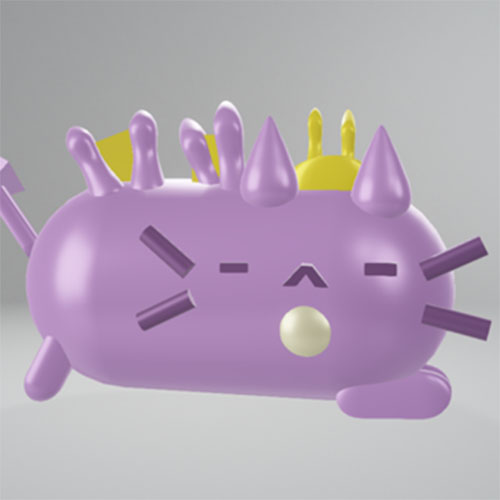
‘Desert Cat’ – one of the designed in the Awesome Animals Challenge: an animal that could survive in the desert.
Gamified education could be the key to boosting STEM capabilities in primary school students as new research from the University of South Australia shows that it can improve spatial reasoning skills and shape positive attitudes towards STEM and design thinking.
The study showed that regular use of Makers Empire – a gamified 3D computer-aided design program – can significantly improve spatial reasoning skills in up to 85 per cent of children.
Spatial reasoning is the capacity to establish relationships between objects and understand how they interact and look from different perspectives and environments. It is a key skill for many professions, but especially important for jobs in STEM (science, technology, engineering and maths).
Lead researcher, UniSA’s Associate Professor Simon Leonard, says finding ways to connect and boost children’s interest in STEM is vital for Australia’s economic prosperity.
“The number of students studying STEM subjects in high school is still far too low, so it’s essential that we continue to encourage younger students to develop a keen interest and capability in these key areas,” Assoc Prof Leonard says.
“We’ve known for a while now that spatial thinking is one of the important ingredients to success across the STEM disciplines, and that spatial reasoning is malleable – it can be improved.
“By engaging children with the Makers Empire program, we not only showed improvements in students’ spatial reasoning skills, but also that the growth trajectory was greatest among students who were struggling in this area.
“Students who started with slightly lower spatial reasoning skills than their peers demonstrated a growth trajectory three times greater than their peers who started with more developed skills. This group also reported increased enjoyability and reduced anxiety towards Digital and Design Technology.”
Working with 155 primary students (aged 11-13 years), the study assessed the use of the Makers Empire 3D design app for one 45-90-minute lesson each week, over 10 weeks. Both boys and girls showed significant increases in three spatial reasoning skills: mental rotation, spatial orientation, and spatial visualisation.
Importantly, the program also boosted girls’ beliefs and abilities to master these spatial reasoning skills, lowering the gender gap from 3.5 per cent to 1.9 per cent.
In Australia, women make up only 28 per cent of the STEM workforce with the gender gaps particularly high in some of the fastest-growing and highest-paid jobs of the future.
Mandi Dimitriadis, Director of Learning at Makers Empire says the findings of this research are very encouraging.
“Helping children develop their spatial reasoning skills in a fun and engaging way is really rewarding, and we’re very pleased to see the evidence for what teachers have been telling us over the years,” Dimitriadis says.
“It’s especially rewarding to see so many young girls engage with this technology and become more excited about STEM.
“Supporting children’s confidence and skills in STEM is vital for their future success; we are just pleased we can play a small part in this exciting journey.”
Notes to editors:
Makers Empire is a 3D Design and Technology program used in over 500 schools in Australia and over 50 countries worldwide. It helps develop children’s creative confidence, design thinking skills and interest in STEM by allowing them to create anything they can imagine and also to design solutions and prototypes to solve real-world problems. For teachers, Makers Empire includes a dashboard for class management, lesson planning, assigning challenge courses and tracking student progress. For more information visit: https://youtu.be/-dH3YcTZcPA
STEM stats:
- The number of school students studying STEM in later secondary (Year 11 and 12) has flat-lined at around 10 per cent or less.
- Australia is slipping down the international ranking tables as other countries improve. In 2003, 4 countries or economies significantly outperformed Australia in PISA mathematics. In 2018, 23 did.
- Around 40 per cent of Australia’s Year 7 to 10 mathematics classes are taught without a qualified mathematics teacher.







